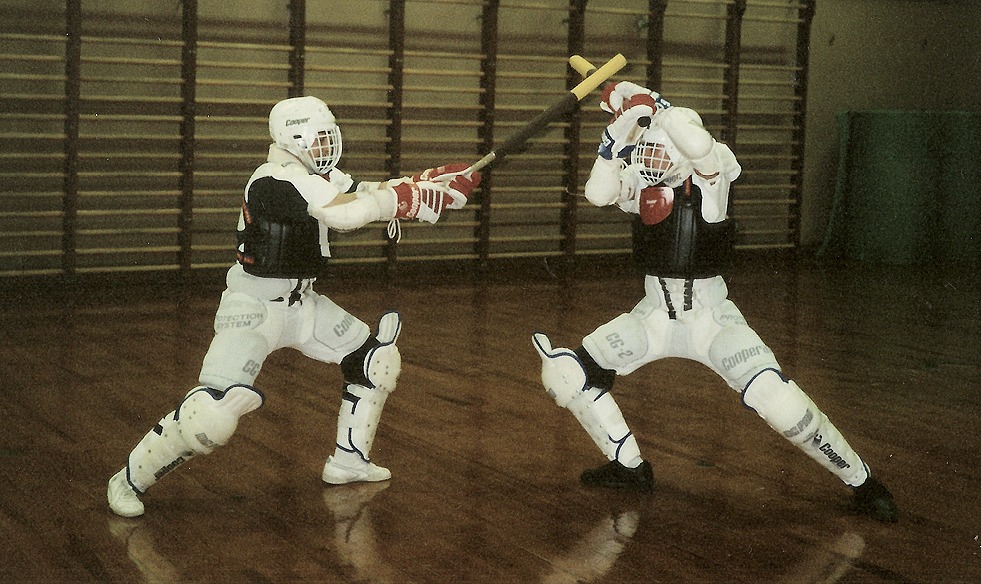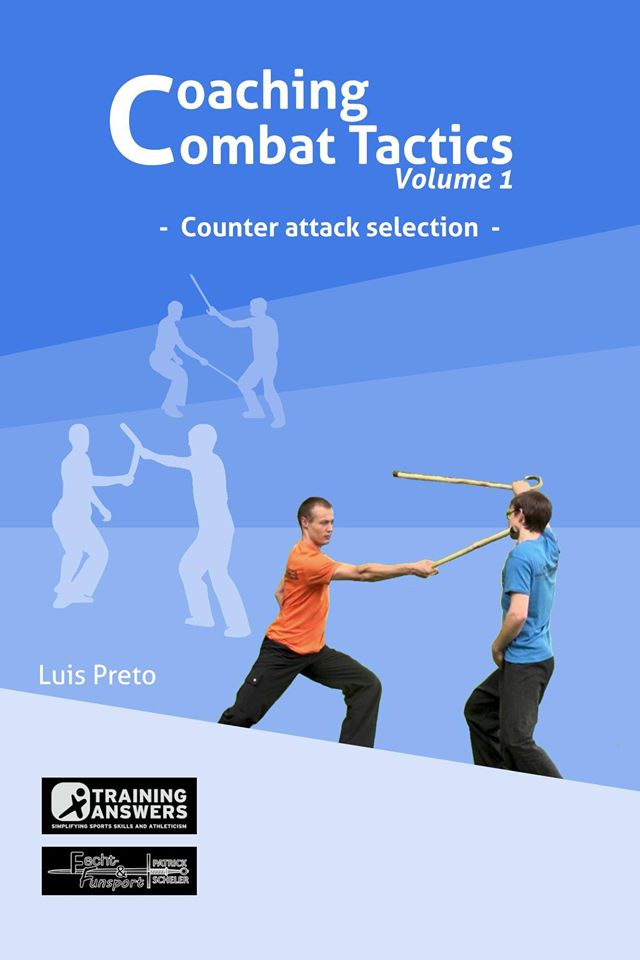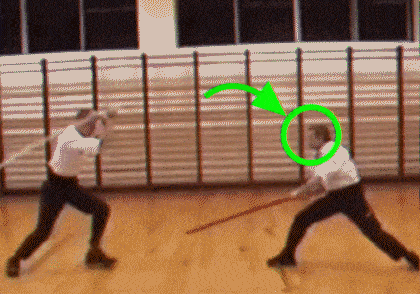
esgrima lusitana
7 puxadores cheios de força
Aula terminada com grande sucesso, 7 puxadores cheios de força.
Gepostet von Esgrima Lusitana Cascais – Jogo do Pau Português am Samstag, 1. April 2017
FREE E-book – Lucky friday the 13th !
É na minha opinião o melhor livro de jogo do pau de sempre, e uma analise profunda da tática da nossa arte, aplicável de uma forma generalizável a várias armas e contextos.
Totalmente gratuito, mas apenas nos próximos 4 dias, aproveitem esta oportunidade única!

Over the next 4 days (13th – 16th May),the book Coaching combat tactics: Counter attack selection is available for FREE in its digital format (on amazon)
Please share this message if you have friends interested in martial arts and their teaching.
Best wishes,
LP
About the book:
The goal of this book is to simplify the training of all fencing (weapon) arts, tackling both the subject of contents (What to teach) and pedagogy (How to teach).
This is sought by sharing concepts, games & drills that easily teach how to choose one’s counter according to:
1. Number of opponents
2. Traits of weapons:
a) Bladed /blunt
b) With and without hand guard
c) Single or double handed
3. Having greater, lesser or the same reach
4. Type of parry performed
5. Quality of footwork
About the Author –A brief presentation of Coach Luis Preto:
- Instructor of stick combat (Jogo do Pau), Karate & Wrestling
- Undergrad in physical education
- Two masters in sport sciences
a) Sport teaching strategies (ULHT/Lisbon)
b) Coaching (UBC/Vancouver) - Certified by the International Sport Sciences Association as a:
a) Fitness trainer
b) Youth training specialist
c) Endurance training specialist
Link: https://www.amazon.com/Coaching-combat-tactics-Counter-selection-ebook/dp/B017J19MNI?ie=UTF8
Demonstração G.C.P. PORTIMÃO- 1998
[facebook url=”https://www.facebook.com/assalgarvia.jogopauportugues/videos/590220864454643/” /]
FESTIVAL NACIONAL DE ESCOLAS DE JOGO DO PAU – PORTIMÃO- 1998
GINÁSIO CLUBE PORTUGUÊS
MESTRE NUNO RUSSO + MESTRE JOSÉ SARAMAGO + MESTER NUNO MOTA + José Augusto + Nuno Pinto + Ricardo Machado + Pedro Pinto + André Fernandes + Hugo Paz + Fernando Dias + Manuel Alves + Carlos Fernandes + Jorge Saramago — at PORTIMÃO.
video em: facebook.com/assalgarvia.jogopauportugues
0:00 – Formas de combate em inferioridade numérica.
0:30 – Demonstração Técnica.
3:40 – Jogo livre entre mestre Nuno Russo e Nuno Mota.
4:35 – Séries.
6:05 – Guardas na Cadeira.
6:30 – 1 contra 3.
[youtube http://www.youtube.com/watch?v=qs63h5O_Xto?feature=oembed&w=500&h=281]
Mestre Nuno Russo a treinar Marco Morais as guardas na cadeira.
Master Nuno Russo teaching Marco Morais the parries in the chair, drill characteristic of jogo do pau.
Deslocamento em jogo / Body displacement in freeplay

Sequencia de 6 defesas e contra ataques / Sequence of 6 parry and counters
PT:
Como podemos ver na imagem, o descolamento do corpo em jogo livre deve ser constante, havendo sempre um ajuste da distancia na defesa, sendo que o ataque é sempre realizado para bater. O jogador que ataca, avança para chegar ao alvo, mas o que defende recua, mantendo-se seguro. Esta não é uma regra absoluta, pois quem defende pode conseguir defender no lugar ou mesmo a avançar, mas este deslocamento base, permite uma maior segurança, e é o mais comummente utilizado.
Quando se vê o video normalmente, pode parecer que as varas so tocam uma na outra e que se esta a atacar para o ar. Isso seria verdade se não houvesse deslocamento, mas neste caso podemos ver que os ataques são feitos para o corpo, e é o constante deslocamento que permite uma defesa segura.
Note que deslocamento do corpo não é apenas deslocamento do pé, é possível mover o pé sem quase mexer o corpo, mas o que se quer aqui é deslocar tanto o corpo como o pé.
EN:
As we can see in the image, the movement of the body is constant in traditional freeplay, there is always an adjustment by the defender, and the attack is done to reach him. The fencer that attacks moves forward to reach the target, but the defender retreats back, keeping a safe distance. This is not a “rule of the game”, the defender could stay in place or even move forward when parrying if he had the skill for that, but this displacement allows more safety and is the most commonly used.
When the video is played normally it might look like the fencers are striking out of range and only hitting to the staffs. That would be true if they didn’t move their body and just stayed in place hitting out of distance, but this is not the case, since the strikes are made to the target and the body displacement of the defender is what creates the safe distance.
Note that body displacement is not the same as just footwork, it is possible to move the feet without barely moving the body, that is not what we see here, what is done in jogo do pau is the displacement of the body as much as the feet.
[youtube http://www.youtube.com/watch?v=njhAdm3Vj2E?feature=oembed&w=500&h=281]
Análise ao inicio de forma de combate contra vários adversários no contexto de defesa pessoal com varapau.
Analysis of jogo do pau’s multiple opponents, in the context of self defense with the walking staff.

Nuno Russo e Luis Preto
A técnica de Bastão de combate da Esgrima Lusitana deriva da utilização do varapau a duas mãos, aperfeiçoada pelo mestre Nuno Russo, que podemos ver no clip.
Jogo do pau baton fencing technique derived from traditional two handed long staff, developed and perfected by master Nuno Russo on the left of the clip.
Professor Artur Santos – Ginástica e Esgrima de Pau
Professor Artur Santos – Ginástica e Esgrima de Pau
Artur Santos (1874-1959) – Gymnastics and Staff Fencing




